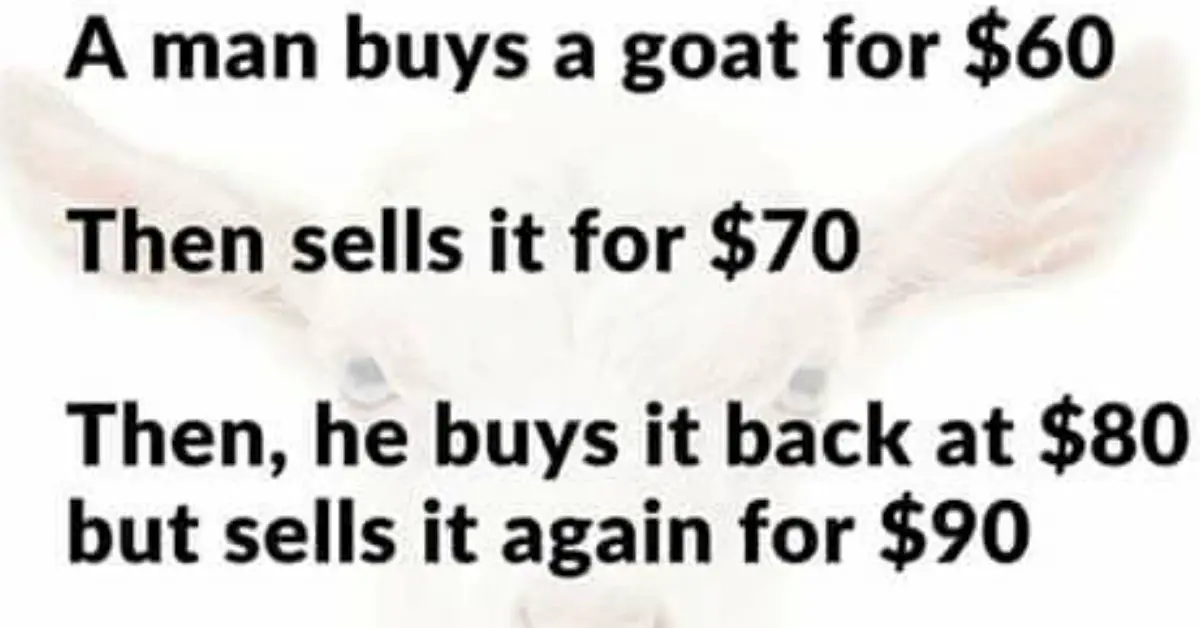Not all of us can be good at selling things and not everyone knows how to make a good profit from selling. Making a good deal, selling something more expensive than the value you bought it from is a trait of a good trader. A good trader knows how to make a good deal and a good profit from the unprofitable things that are for sale. The important thing at the end of the trade is the profit. Do you consider yourself a good trader? Do you think that you are capable of making good deals and making a profit?
In the following task you should show your mathematical abilities. You are asked to find out how much profit the man has made with the trade.
The task is as follows:
A man buys a goat for $60. Then sells it for $70. Then, he buys it back at $80 but sells it again for $90. How much did he make?
Try to Discover the Profit from this Deal! This task is basic economic mathematics. This feature is possessed by good traders who know how to buy but how and for how much to sell goods. A good trader knows how to make a good deal, he knows how to buy at a lower price and sell at a higher price. Not everyone is good at math, but to be a good trader you do not have to be good at math. It is enough to have the basic skils.
Did you manage to calculate how much profit the man earned?
This task may seem rather complicated to you, and it may be devoted to discovering the price of a goat. But the price of a goat has nothing to do with profit. This is a simple mathematical economic task.
This puzzle confused many social network users and many of them answered the question incorrectly: How much profit did the man get with his sale? It may seem pretty complicated, but it still isn’t. The seemingly mathematical problem leads you to think in the wrong direction and focus on the wrong deals, but still a little logical thinking and you will find the answer easily.
Here, if you failed to find the answer, we will explain the procedure for solving this problem. A little math, a little economics, a little basic skills and you will easily get the right answer.
In fact, mathematically, this task would look like this:
He made $ 20. $ 10 the first time, $ 70- $ 60 = $ 10, and $ 10 the second time, $ 90- $ 80 = $ 10, for a total of $ 20.
Assume the man started trading with $ 100 in his pocket, and at the end of the trade he would have $ 120 in his pocket.
Interesting isn’t it? Sure, at first it seemed to you that there was a lot more profit here, but still math is math.


